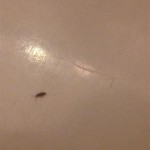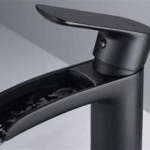How To Remove a Bathroom Faucet Drain Pipe
Removing a bathroom faucet drain pipe is a common plumbing task that many homeowners can tackle themselves. This process involves disconnecting the drain pipe from the faucet, the drain assembly, and the P-trap, requiring a few basic tools and some patience. This article will provide a step-by-step guide on how to remove a bathroom faucet drain pipe safely and efficiently.
Gathering the Necessary Tools
Before you start, gather the following tools to ensure a smooth and efficient removal process:
- Adjustable wrench
- Channel-lock pliers
- Basin wrench
- Screwdriver
- Bucket
- Rubber gloves
- Shop towels
Having these tools readily available will prevent any delays or interruptions during the removal process.
Steps to Remove the Bathroom Faucet Drain Pipe
Follow these steps to safely remove the bathroom faucet drain pipe:
Step 1: Turn Off the Water Supply
The first step is to shut off the water supply to the bathroom sink. This is usually done by turning a valve located under the sink or near the water meter. Turning off the water supply prevents any water from flowing out of the faucet or drain pipe during the removal process.
Step 2: Drain the Water from the Pipes
Open the faucet to drain any remaining water in the pipes. This will prevent any water from spilling or creating a mess during the removal process. You can use a bucket to collect any remaining water.
Step 3: Disconnect the Drain Pipe from the Faucet
Locate the drain pipe connecting the faucet to the drain assembly. This pipe is usually made of metal or plastic and has a nut or coupling connecting it to the faucet. Use an adjustable wrench or channel-lock pliers to loosen and remove the nut or coupling. If the nut or coupling is tight, you may need to use a basin wrench to access and loosen it.
Step 4: Disconnect the Drain Pipe from the Drain Assembly
Once the drain pipe is disconnected from the faucet, locate where it connects to the drain assembly. This connection is usually located under the sink and is secured by a nut or threaded coupling. Use an adjustable wrench or channel-lock pliers to loosen and remove the nut or coupling, carefully disconnecting the drain pipe from the drain assembly.
Step 5: Disconnect the Drain Pipe from the P-trap
The drain pipe is usually connected to the P-trap with a threaded coupling or a slip nut. Use an adjustable wrench to loosen and remove the coupling or nut. If the P-trap is made of PVC, you may need to use a pipe cutter to cut the drain pipe near the P-trap.
Step 6: Remove the Drain Pipe
With the drain pipe disconnected from the faucet, drain assembly, and P-trap, remove the drain pipe entirely. Be careful not to damage any surrounding pipes or fixtures during this step. Discard or store the old drain pipe appropriately.
Safety Precautions
When working with plumbing, safety should always be a priority. Observe these precautions during the removal process:
- Wear rubber gloves to protect your hands from any sharp edges or water.
- Use a bucket to collect any water that may drain from the pipes.
- Be careful not to damage any surrounding pipes or fixtures.
- If you are unsure about any part of the removal process, consult a professional plumber.

How To Replace A Sink Stopper Quick And Simple Home Repair

Bianchina Swapping Out A Bathroom Sink Drain And Pop Up

How To Replace A Rusty Sink Drain Howtolou Com

How To Replace A Bathroom Faucet Home Repair Tutor

How To Replace A Bathroom Faucet Removal And Installation

How To Remove And Install A Bathroom Faucet

How To Remove A Bathroom Sink Stopper Take Out Pop Up Drain From

How To Replace A Bathroom Faucet Removal And Installation

Replacing A Bathroom Faucet Fine Homebuilding
How To Install Bathroom Sink Drain Queen Bee Of Honey Dos
Related Posts







